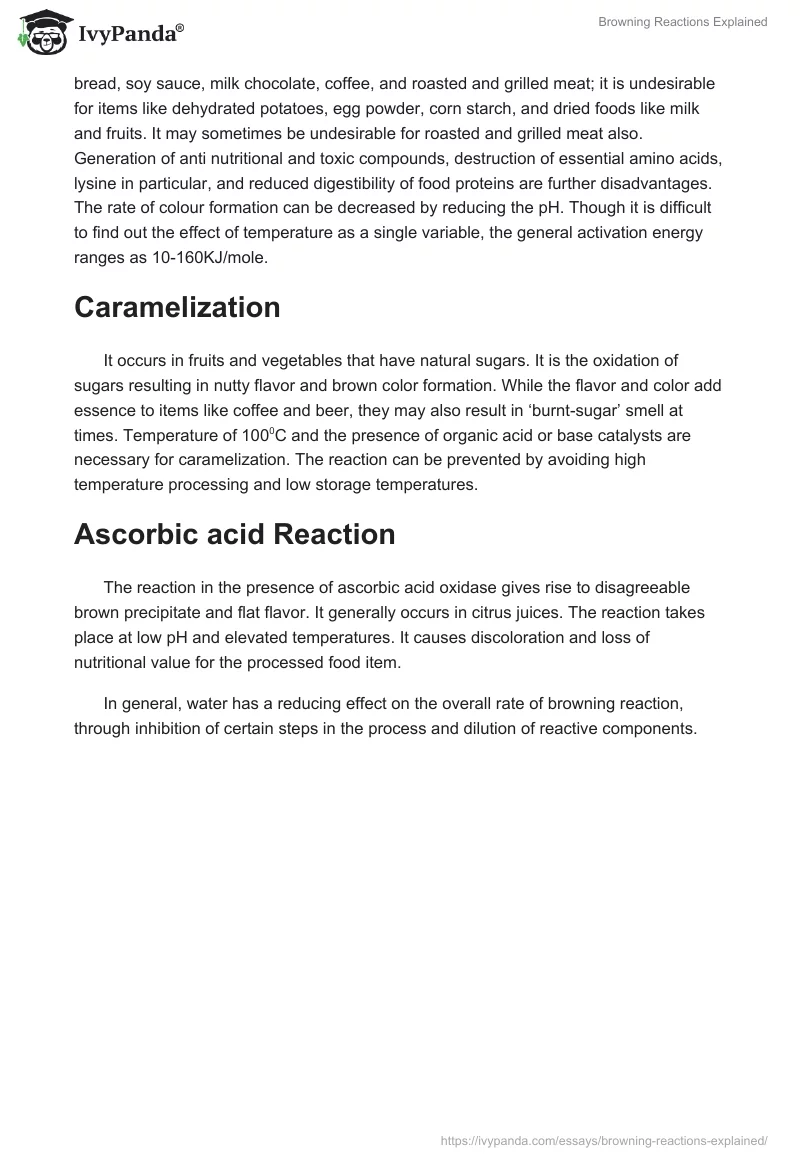Browning reactions occur when proteins or amino acids react with carbohydrates in the presence of heat. It is generally used to sear or brown a piece of meat, fish, poultry, toasted bread, dried fruits, gravy mixes, franks with bean etc. Browning reactions are useful for getting characteristic flavors, aromas, and brown colour for many cooked foods. It is desirable that the food surface should exceed 300°F to obtain proper brown crust.
They are two types of browning reactions – enzymatic and non-enzymatic.
Non-enzymatic browning reactions are further divided in to three types:
- Millard Reaction.
- Caramelization.
- Ascorbic acid Reaction.
Enzymatic Browning Reaction
It is also called phenolase or enzymatic-catalytic oxidation browning. It is more common in fruits and vegetables that contain phenolase, and the reaction commonly takes place at the cut surface. The color change occurs due to the oxidation of phenols to orthoquines and further polymerization resulting in the formation of brown pigment or melanins. The process involves hydroxylation followed by oxidation. Hydroxylation of monophenols is the slow and rate determining step in the reaction. Phenolase is active at pH 5-7 and is irreversibly inactivated at pH lower than 3.
Millard Reaction
It is the reaction of free amino groups like amines, amino acids, peptides and proteins with reducing sugars in the presence of heat and during storage. It was first described by Louis Millard in 1912. While the advantages of the reaction are caramel aromas, taste and golden brown appearance of foods, the disadvantages include food darkness and off-flavor development. The cyclization /dehydration of deoxyosones is responsible for flavor production. Though colour development is desirable for foods like bread, soy sauce, milk chocolate, coffee, and roasted and grilled meat; it is undesirable for items like dehydrated potatoes, egg powder, corn starch, and dried foods like milk and fruits. It may sometimes be undesirable for roasted and grilled meat also. Generation of anti nutritional and toxic compounds, destruction of essential amino acids, lysine in particular, and reduced digestibility of food proteins are further disadvantages. The rate of colour formation can be decreased by reducing the pH. Though it is difficult to find out the effect of temperature as a single variable, the general activation energy ranges as 10-160KJ/mole.
Caramelization
It occurs in fruits and vegetables that have natural sugars. It is the oxidation of sugars resulting in nutty flavor and brown color formation. While the flavor and color add essence to items like coffee and beer, they may also result in ‘burnt-sugar’ smell at times. Temperature of 100°C and the presence of organic acid or base catalysts are necessary for caramelization. The reaction can be prevented by avoiding high temperature processing and low storage temperatures.
Ascorbic acid Reaction
The reaction in the presence of ascorbic acid oxidase gives rise to disagreeable brown precipitate and flat flavor. It generally occurs in citrus juices. The reaction takes place at low pH and elevated temperatures. It causes discoloration and loss of nutritional value for the processed food item.
In general, water has a reducing effect on the overall rate of browning reaction, through inhibition of certain steps in the process and dilution of reactive components.


